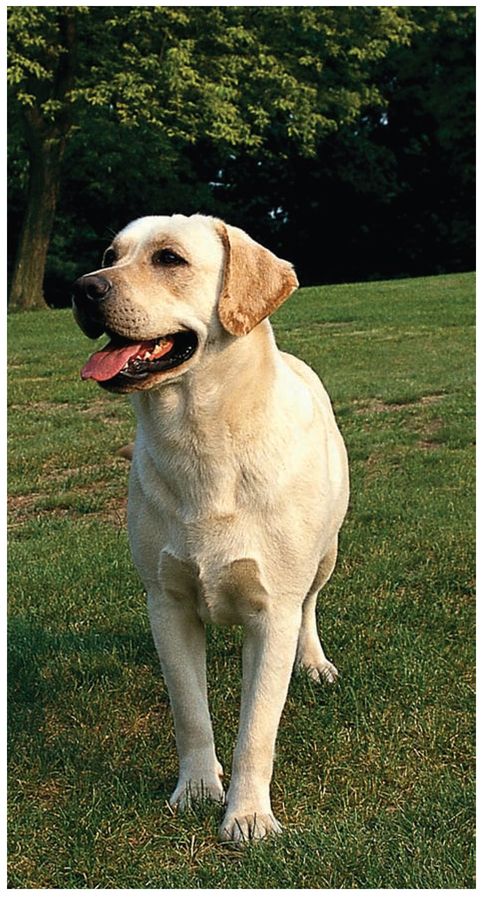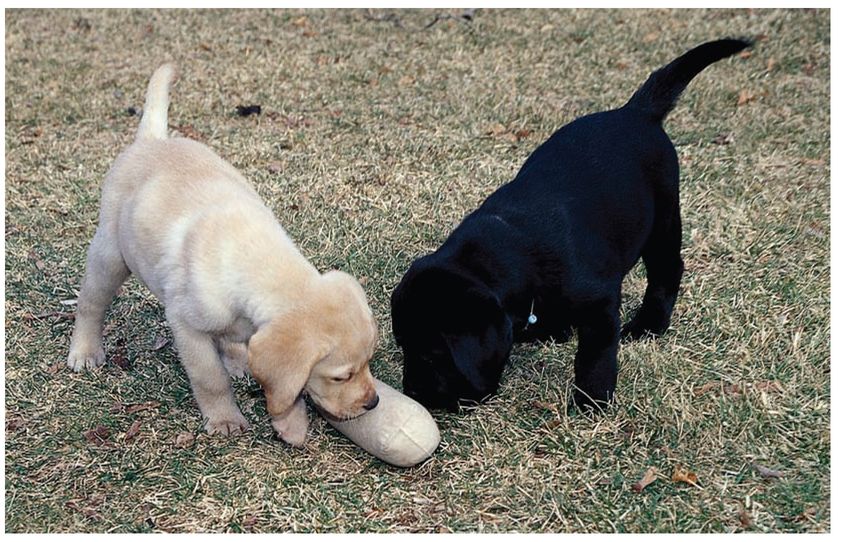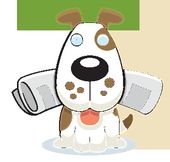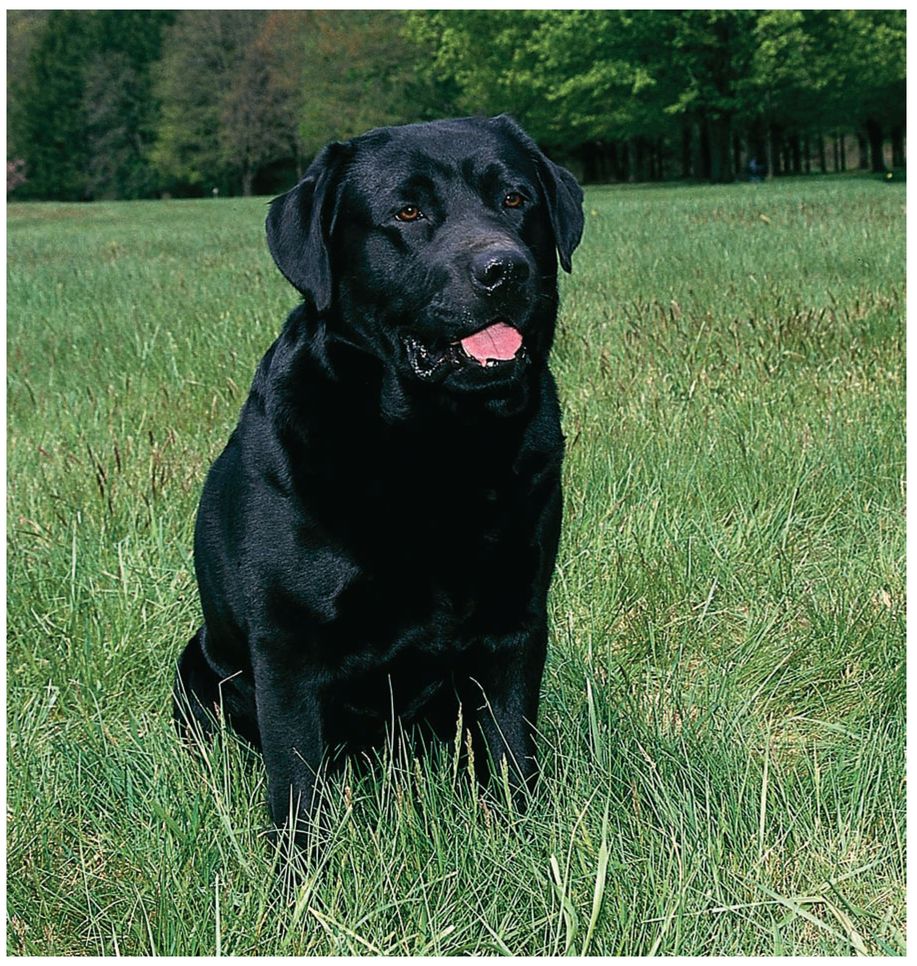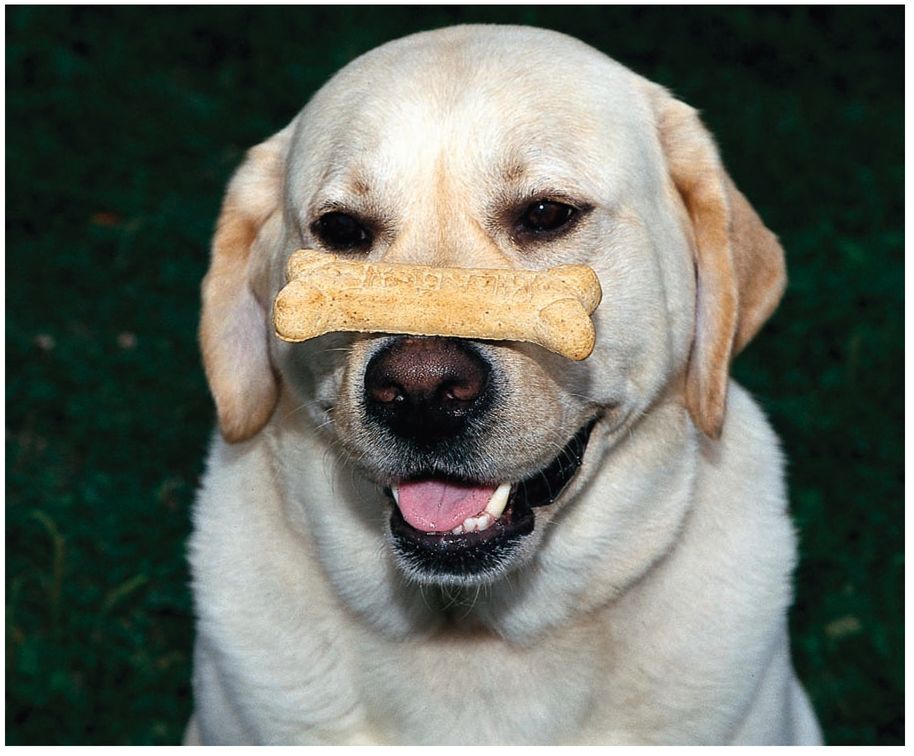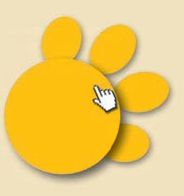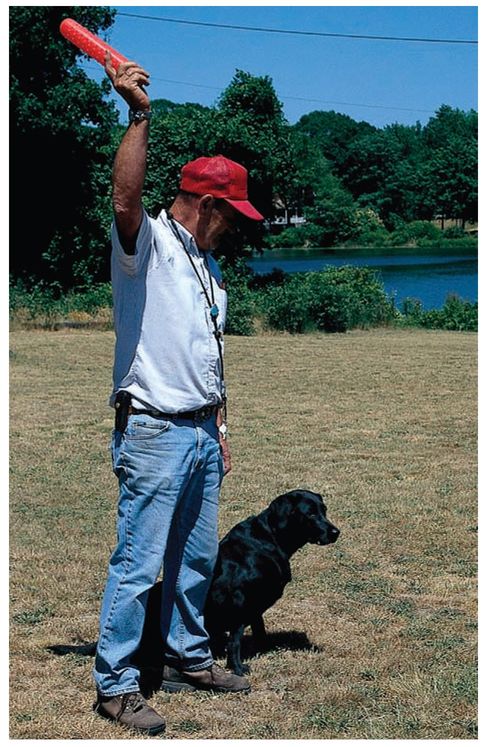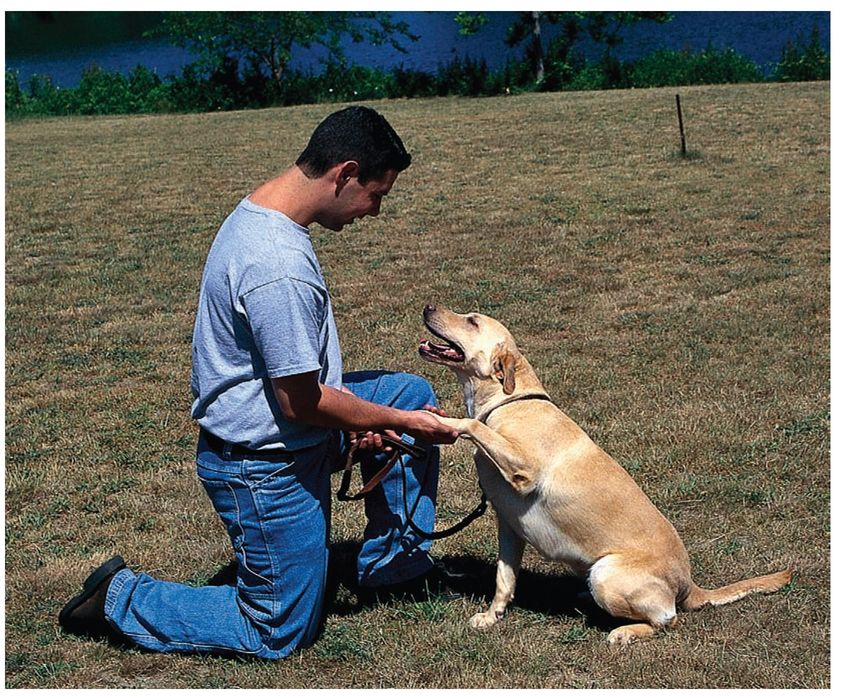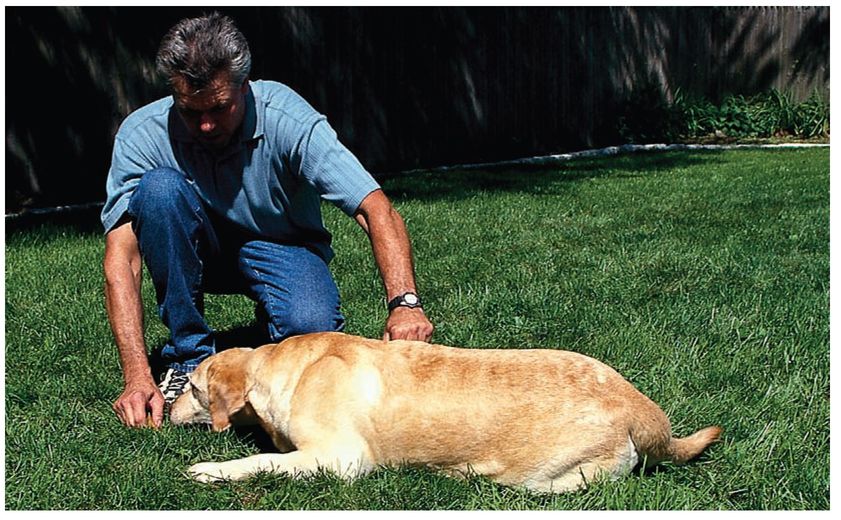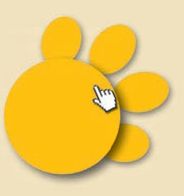CHAPTER 10
TIME TO TRAIN
Reward-based training methods—clicker and luring—show dogs what to do and help them do it correctly, setting them up for success and rewards rather than mistakes and punishment. Most dogs find food rewards meaningful; Labs are no exception. They tend to be very food-motivated.
Positive training relies on using treats, at least initially, to encourage the dog to offer a behavior. The treat is then given as a reward. When you reinforce desired behaviors with rewards that are valuable to the dog, you are met with happy cooperation, rather than resistance.
Positive does not mean permissive. While you are rewarding your Lab’s desirable behaviors, you must manage him to be sure he doesn’t get rewarded for undesirable behaviors. Training tools, such as leashes, tethers, baby gates, and crates, help keep your dog out of trouble, and the use of force-free negative punishment (the dog’s behavior makes a good thing go away) helps him realize there are negative consequences for inappropriate behaviors.
Did You know?
The prime period for socialization is short. Most behavorial experts agree that positive experiences during the ten-week period between four and fourteen weeks of age are vital to the development of a puppy who’ll grow into an adult dog with a sound temperament.
LEARNING SOCIAL GRACES
Now that you have done all of the preparatory work and have helped your pup get accustomed to his new home and family, it is time for you to have some fun! Socializing your Labrador pup gives you the opportunity to show off your new friend, and your pup gets to reap the benefits of being an adorable little creature that people will want to pet and, in general, think is absolutely precious!
Besides getting to know his new family, your puppy should be exposed to other people, animals, and situations, but not until he has had all his vaccinations. This will help your Labrador Retriever become well adjusted as he grows up, and less prone to being timid or fearful of the new things he will encounter.
Your puppy’s socialization began at the breeder’s home, but now it is your responsibility to continue it. The socialization he receives up until the age of twelve weeks is the most critical, as this is the time when he forms his impressions of the outside world. Be especially careful during the eight- to ten-week period, also known as the fear period. The interaction your Lab receives during this time should be gentle and reassuring. Lack of socialization can manifest itself in fear and aggression as the dog grows up. The pup needs lots of human contact, affection, handling, and exposure to other animals.
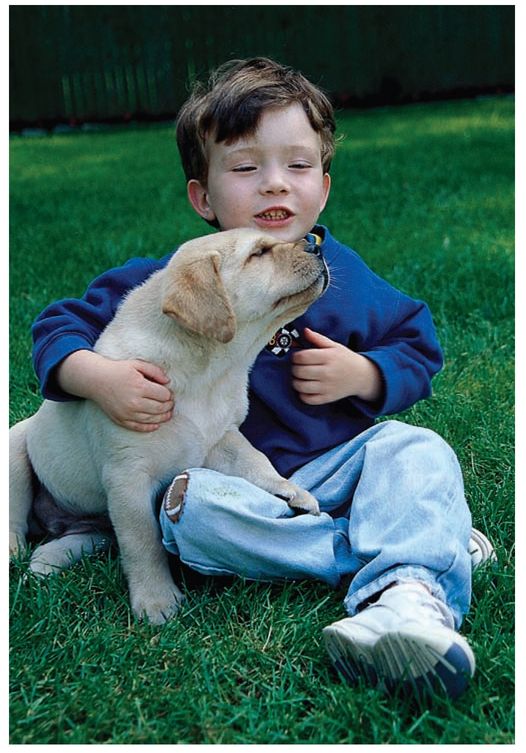
Once your pup has received his necessary vaccinations, feel free to take him out and about (on his leash, of course). Walk him around the neighborhood, take him on your daily errands, let people pet him, and let him meet other dogs and pets. Make sure to expose your Lab to different people—men, women, kids, babies, men with beards, teenagers with cell phones or riding skateboards, joggers, shoppers, someone in a wheelchair, a pregnant woman, etc. Make sure your Lab explores different surfaces like sidewalks, gravel, and puddles. Positive experience is the key to building confidence. It’s up to you make sure your Lab safely discovers the world so he will be a calm, confident, and well-socialized dog.
NOTABLE & QUOTABLE
If you want to make your dog happy, create a digging spot where he’s allowed to disrupt the earth. Encourage him to dig there by burying bones and toys, and helping him dig them up.
—Pat Miller, a certified pet dog trainer and owner of Peaceable Paws dog-training facility in Hagerstown, Md.
It’s very important that you take the lead in all socialization experiences and never put your puppy in a scary or potentially harmful situation. Be mindful of your Labrador Retriever’s limitations. Fifteen minutes at a public market is fine; two hours at a loud outdoor concert is probably too much. Meeting vaccinated, tolerant, and gentle older dogs is great. Meeting dogs you don’t know isn’t such a great idea, especially if they appear very energetic, dominant, or fearful. Control the situations in which you place your puppy.
SMART TIP!
If your Lab puppy refuses to sit with both haunches squarely beneath him and instead sits on one side or the other, he may have a physical reason for doing so. Discuss the habit with your veterinarian to be certain that your dog isn’t suffering from some structural problem.
The best way to socialize your puppy to a new experience is to make him think it’s the best thing ever. You can do this with a lot of talk, enthusiasm, and, yes, food.
To convince your puppy that almost any experience is fun, always carry treats. Consider carrying two types—a bag of his puppy chow, which you can give him when introducing him to nonthreatening experiences, and a bag of high-value, mouth-watering treats—such as boiled chicken pieces—to give him when introducing to scarier experiences.
At a minimum, your dog should know how to sit, stay, lie down, and come on cue.
it’s a Fact
The first step to a properly socialized Lab is a good breeder. A good breeder not only works to breed friendly, healthy puppies, but also provides a home where puppies receive all the right experiences in their first few weeks of life. That’s why it is so important that you buy your puppy from a breeder who creates a safe, comfortable place for his puppies.
BASIC CUES
All Labrador Retrievers, regardless of your training and relationship goals, need to know at least five basic good-manner behaviors: sit, down, stay, come, and heel. Here are tips for teaching your dog these important cues.
Sit: Every dog should learn how to sit on command.
▲ Hold a treat at the end of your Labrador Retriever’s nose.
▲ Move the treat over his head.
▲ When your dog sits, click a clicker or say “Yes!”
▲ Feed your dog the treat.
▲ If your dog jumps up, hold the treat lower. If he backs up, back him into a corner and wait until he sits. Be patient. Keep your clicker handy, and click (or say “Yes!”) and treat anytime he offers a sit.
▲ When he easily offers sits, say “sit” just before he offers, so he can make the association between the word and the behavior. Add the sit cue when you know you can get the behavior. Your dog doesn’t know what the word means until you repeatedly associate it with the appropriate behavior.
▲ When your Lab sits easily on cue, start using intermittent reinforcement by clicking some sits but not others. At first, click most sits and skip an occasional one (this is a high rate of reinforcement). Gradually make your clicks more and more random.
Down: If your dog can sit, then he can learn to lie down.
▼ Have your dog sit.
▼ Hold the treat in front of his nose. Move it down slowly, straight toward the floor (toward his toes). If he follows all the way down, click and treat.
▼ If he gets stuck, move the treat down more slowly. Click and treat for small movements downward—moving his head a bit lower, or inching one paw forward. Keep clicking and treating until he is all the way down. This is called “shaping”—rewarding small pieces of a behavior until your dog succeeds.
▼ If your Labrador Retriever stands as you move the treat toward the floor, have him sit, and move the treat more slowly downward, shaping with clicks and treats for small movement down as long as he is sitting. If he stands, cheerfully say “Oops!” (which means “Sorry, no treat for that!”), have him sit, and try again.
Once your dog knows the basic cues, it will be easier to teach him more advanced things like tricks.
▼ If shaping isn’t working, sit on the floor with your knee raised. Have your Lab sit next to you. Put your hand with the treat under your knee and lure him under your leg so that he lies down and crawls to follow the treat. Click and treat!
▼ When you can lure the down easily, add the verbal cue, wait a few seconds to let your dog think, then lure him down to show him the association. Repeat until he’ll go down on the verbal cue. Then begin using intermittent reinforcement.
Stay: What good are sit and down cues if your dog doesn’t stay?
● Start with your dog in a sit or down position.
JOIN OUR ONLINE Lab Club
With the proper training, your Lab will be as well-behaved as he is adorable. One certification that all dogs should receive is the American Kennel Club Canine Good Citizen that rewards dogs with good manners. Go to
DogChannel.com/Club-Lab and click on “downloads” to get the 10 steps required for your dog to be a CGC.
● Put the treat in front of his nose and keep it there.
● Click and reward several times while he is in position, then release him with a cue that you will always use to tell him the stay is over. Common release cues are: “all done,” “break,” “free,” “free dog,” “at ease” and “OK.”
● When your Labrador Retriever will stay in sit or down position while you click and treat, add your verbal stay cue. Say “stay,” pause for a second or two, click and say “stay” again. Release.
Did You know?
Once your dog understands what behavior goes with a specific cue, it is time to start weaning him off the food treats. At first, give a treat after each exercise. Then, start to give a treat only after every other exercise. Mix up the times when you offer a food reward and the times when you only offer praise, so that the dog will never know when he is going to receive food and praise and when he is going to receive only praise.
● When he’s getting the idea, say “stay,” whisk the treat out of sight behind your back, click, and whisk the treat back. Be sure to get it all the way to his nose, so he doesn’t jump up. Gradually increase the duration of the stay.
● When your dog will stay for fifteen to twenty seconds, add small distractions: shuffling your feet, moving your arms, small hops. Increase distractions gradually. If he makes mistakes, you’re adding too much, too fast.
● When he’ll stay for fifteen to twenty seconds with distractions, gradually add distance. Have your dog stay, take a half-step back, click, return, and treat. When he’ll stay with a half-step, tell him to stay, take a full step back, click, and return. Always return to your dog to treat after you click, but before you release. If you always return, his stay becomes strong. If you call him to you, his stay gets weaker due to his eagerness to come to you.
Come: A reliable recall—coming when called—can be a challenging behavior to teach. It is possible, however. To succeed, you need to install an automatic response to your “come” cue—one so automatic that your dog doesn’t even stop to think when he hears it, but will spin on his heels and charge to you at full speed.
■ Start by charging a come cue the same way you charged your clicker. If your Lab already ignores the word “come,” pick a different cue, like “front” or “hugs.” Say your cue and feed him a bit of scrumptious treat. Repeat this until his eyes light up when he hears the cue. Now you’re ready to start training.
■ With your dog on a leash, run away several steps and cheerfully call out your charged cue. When he follows, click the clicker. Feed him a treat when he reaches you. For a more enthusiastic come, run away at full speed as you call him. When he follows at a gallop, click, stop running, and give him a treat. The better your dog gets at coming, the farther away he can be when you call him.

Once your dog understands the come cue, play with more people, each with a clicker and treats. Stand a short distance apart and take turns calling and running away. Click and treat in turn as he comes to each of you. Gradually increase the distance until he comes flying to each person from a distance.
■ When you’re ready to practice in wide-open spaces, attach a long line—a 20- to 50-foot leash—so you can gather up your Labrador Retriever if that taunting squirrel nearby is too much of a temptation. Then go practice where there are less tempting distractions.
Heel: Heeling means that the dog walks beside the owner without pulling. It takes time and patience on your part to succeed at teaching the dog that you will not proceed unless he is walking calmly beside him. Pulling out ahead on the leash is definitely not acceptable.
SMART TIP!
If you begin teaching the heel cue by taking long walks and letting your dog pull you along, he may misinterpret this action as an acceptable form of taking a walk. When you pull back on the leash to counteract his pulling, he will read that tug as a signal to pull even harder!
A dog who knows the basic cues is usually better behaved.
Begin teaching your pup when he’s young to prevent problems later on.
▲ Begin by holding the leash in your left hand as the dog sits beside your left leg. Move the loop end of the leash to your right hand, but keep your left hand short on the leash so that it keeps the dog close to you.
▲ Say “heel” and step forward on your left foot. Keep the dog close to you and take three steps. Stop and have the dog sit next to you in what we now call the heel position. Praise verbally, but do not touch the dog. Hesitate a moment and begin again with “heel,” taking three steps and stopping, at which point the dog is told to sit again.
it’s a Fact
The Fairmont Copley hotel in Boston, Mass., has a Labrador Retriever canine ambassador named Catie Copley. Catie is stationed at the concierge desk on her own plush bed, right in the middle of all the activity—a prime spot for lots of head scratches and treats.
▲ Your goal here is to have the dog walk those three steps without pulling on the leash. Once he will walk calmly beside you for three steps without pulling, increase the number of steps you take to five. When he will walk politely beside you while you take five steps, you can increase the length of your walk to ten steps. Keep increasing the length of your stroll until the dog will walk quietly beside you without pulling for as long as you want him to heel. When you stop heeling, indicate to the dog that the exercise is over by petting him and saying “OK, good dog.” The “OK” is used as a release word, meaning that the exercise is finished, and the dog is free to relax.
▲ If you are dealing with a dog who insists on pulling you around, simply put on your brakes and stand your ground until the dog realizes that the two of you are not going anywhere until he is beside you and moving at your pace, not his. It may take some time just standing there to convince the dog that you are the leader and you will be the one to decide on the direction and speed of your travel.
NOTABLE & QUOTABLE
Playing games with your Lab has many benefits. It strengthens your relationship with your dog and he learns that you are the most exciting thing in his environment, so he’s more likely to be attentive to you. Well-exercised dogs are also less likely to get into trouble.
—dog trainer and behavior counselor Virginia Broitman from Doswell, Va.
A well-trained, obedient and friendly dog is a joy to own.
▲ Each time the dog looks up at you or slows down to give a slack leash between the two of you, quietly praise him and say, “Good heel. Good dog.” Eventually, the dog will begin to respond, and within a few days he will be walking politely beside you without pulling on the leash. At first, the training sessions should be kept short and very positive; soon the dog will be able to walk nicely with you for increasingly longer distances. Remember to give the dog free time and the opportunity to run and play when you have finished heel practice.
JOIN OUR ONLINE Lab Club
The best way to get your Labrador well-socialized is to introduce him to different kinds of people and situations. Go online to download a socialization checklist at
DogChannel.com/Club-Lab
TRAINING TIPS
If not properly socialized, managed, and trained, even well-bred Labs will offer raw material for undesirable behaviors such as jumping up, barking, chasing, chewing, and other destructive behaviors. You can prevent these annoying habits and help your Lab become the perfect dog you’re hoping for by following some basic training and behavior tenets.
■ Be consistent. Consistency is important, not just in relation to what you allow your dog to do (get on the sofa, perhaps) and not do (jump up on people), but also in the verbal and body language cues you use with your dog and in his daily routine.
■ Be gentle but firm. Positive training methods are becoming normal. Properly applied, dog-friendly methods are wonderfully effective, creating canine-human relationships based on respect and cooperation.
■ Manage behavior. All living things repeat behaviors that reward them. Behaviors that aren’t reinforced will go away.
■ Provide adequate exercise. A tired dog is a well-behaved dog. Many behavior problems can be avoided, others resolved, simply by providing your Labrador Retriever with enough exercise.
THE THREE-STEP PROGRAM
Perhaps it’s too late to give your dog consistency, training, and management from the start. Maybe he came from a Lab rescue or a shelter, or you didn’t realize the importance of these tenets when he was a pup. He already may have learned some bad behaviors. Perhaps they’re even part of his genetic package. Many problems can be modified with ease using the following three-step process for changing an unwanted behavior.
Step No. 1: Visualize the behavior you want. If you simply try to stop your dog from doing something, you leave a behavior vacuum. You need to fill that vacuum with something, so your dog doesn’t return to the same behavior or fill it with one that’s even worse! If you’re tired of your dog jumping up, decide what you’d prefer instead. A dog who greets people by sitting politely in front of them is a joy to own.
SMART TIP!
It is a good idea to enroll in an obedience class if one is available in your area. Many areas have dog clubs that offer basic obedience training as well as preparatory classes for obedience competition. There are also local dog trainers who offer similar classes.
Step No. 2: Prevent your dog from being rewarded for the behavior you don’t want. Management to the rescue! When your Lab jumps up to greet you or get your attention, turn your back and step away to show him that jumping up no longer works to gain attention. Step through a door, if necessary.
Step No. 3: Generously reinforce the desired behavior. Remember, dogs repeat behaviors that reward them. If Your Lab no longer gets attention for jumping up and is heavily reinforced with attention and treats for sitting, he will offer sits instead of jumping, because sits get him what he wants.
COUNTER CONDITIONING
Behaviors that respond well to the three-step process are those where the dog does something in order to get good stuff. He jumps up to get attention. He countersurfs because he finds good stuff on counters. He nips at your hands to get you to play with him.
The three steps don’t work well when you’re dealing with behaviors that are based in strong emotion, such as aggression and fear, or with hardwired behaviors such as chasing prey. With these, you can change the emotional or hardwired response through counter conditioning—programming a new emotional or automatic response to the stimulus by giving it a new association. Here’s how you would counter condition a Lab who chases after skateboarders when you’re walking him on a leash.
When your Lab does well, praise him verbally or with treats or some extra play time.
Have a large supply of very high-value treats, such as canned chicken.
Station yourself with your Labrador on a leash at a location where skateboarders will pass by at a subthreshold distance “X”—that is, where your Lab alerts but doesn’t lunge and bark.
Wait for a skateboarder. The instant your Lab notices the skateboarder, feed him bits of chicken, nonstop, until the skateboarder is gone. Stop feeding him the chicken.
Repeat many times until, when the skateboarder appears, your Lab looks at you with a big grin as if to say, “Yay! Where’s my chicken?” This is a conditioned emotional response, or CER.
When you have a consistent CER at X, decrease the distance slightly, perhaps minus 1 foot, and repeat until you consistently get the CER at this distance.
Continue decreasing the distance and obtaining a CER at each level, until a skateboarder zooming right past your Labrador Retriever elicits the happy “Where’s my chicken?” CER. Now go back to distance X and add a second skateboarder. Continue this process of gradual desensitization until your Lab doesn’t turn a hair at a bevy of skateboarders.
JOIN OUR ONLINE Lab Club
Even the best dogs have some bad habits. If you are frustrated with a particular behavior that your Labrador exhibits, don’t despair! Go online and join Club Lab, where you can ask other Labrador owners for advice on dealing with excessive digging, stubbornness, house-training issues, and more. Log on to
DogChannel.com/Club-Lab and click on “Community.”



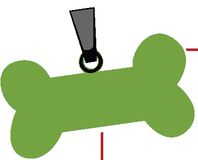

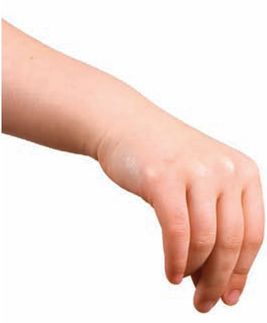

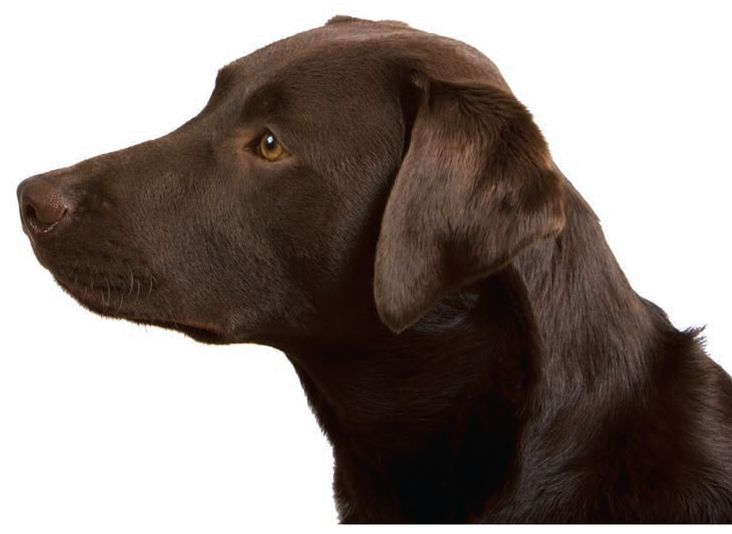

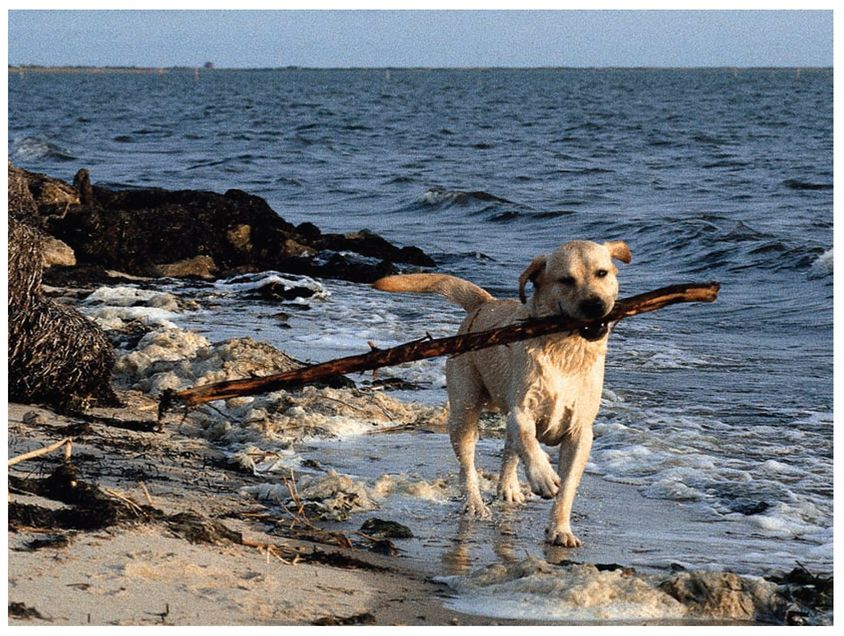
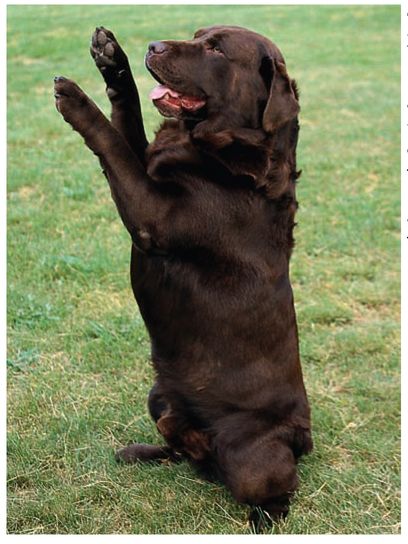
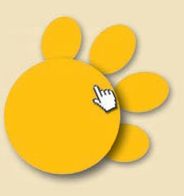
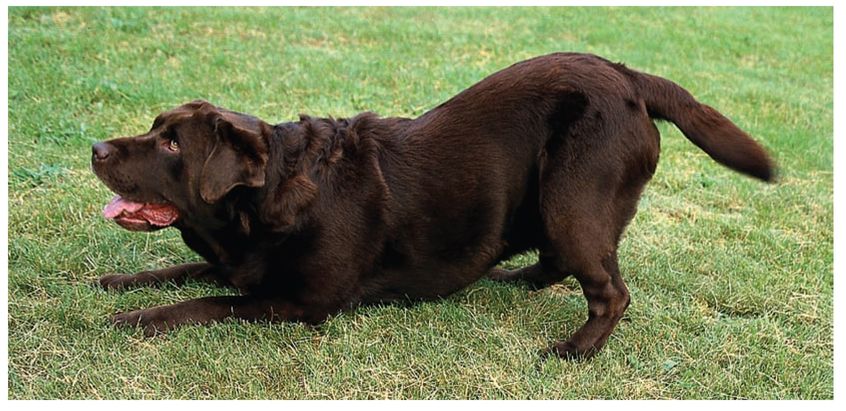
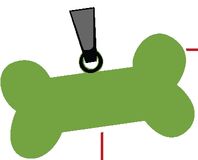
 Once your dog understands the come cue, play with more people, each with a clicker and treats. Stand a short distance apart and take turns calling and running away. Click and treat in turn as he comes to each of you. Gradually increase the distance until he comes flying to each person from a distance.
Once your dog understands the come cue, play with more people, each with a clicker and treats. Stand a short distance apart and take turns calling and running away. Click and treat in turn as he comes to each of you. Gradually increase the distance until he comes flying to each person from a distance.
